Quick Links

Since your nose lies in the center of your face, it may be one of your most important facial features. If you are unhappy with the size and shape of your nose, it may affect your self-confidence and facial balance. Fortunately, there is a solution. A rhinoplasty, or nose job, can dramatically change the shape of each area of the nose, including the bridge, the tip, and the nostrils.
Dr. Capek enjoys performing rhinoplasty procedures because it is an artistic and technical challenge. She also has experience treating patients who have trouble breathing due to a deviated septum and those with nasal deformities due to a cleft lip at birth.
Am I a Good Candidate?
If you are in general good health and have a positive, realistic attitude toward your rhinoplasty procedure, you may be a good candidate for cosmetic surgery. Here are some common reasons why patients consider a surgical rhinoplasty:
- Your nose is too small or too large and does not complement the rest of your face.
- Your nose is crooked, out of alignment, or poorly shaped due to injury or genetics.
- You have a deviated septum or nasal blockage that leads to difficult breathing (surgery for this is called a septoplasty and may be covered by insurance, as well as performed at the same time as a cosmetic rhinoplasty).
- You would like improvement in the appearance of your nose.
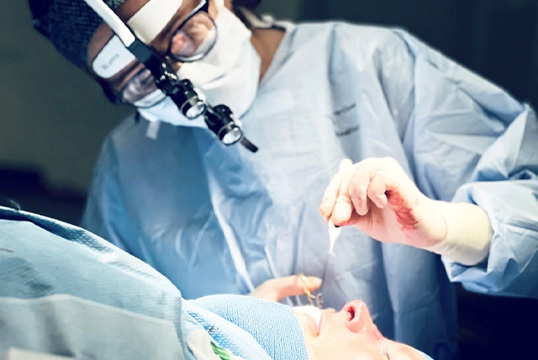
Before Your Procedure
Your consultation with Dr. Capek will involve a complete physical examination and medical history to determine if plastic surgery is right for your needs. She will also assess your existing nose and determine factors like skin thickness, the nose’s shape, and the structure of the nasal septum. This helps Dr. Capek develop the right nasal surgery for your needs.
During your consultation with Dr. Capek, you will also have a chance to discuss your cosmetic reasons for considering rhinoplasty surgery. It is important you are specific in explaining your ideal nose shape and size so that Dr. Capek can determine if your goals are realistic and can be achieved. Once Dr. Capek understands your desired changes and examines the anatomy of your nose, she will propose a surgical plan to address your concerns using either open rhinoplasty or closed rhinoplasty techniques. In some cases, minor alterations to your nose can be made with dermal fillers (a non-surgical procedure sometimes called liquid rhinoplasty).
Dr. Capek and her staff will also provide thorough instructions on how to prepare for your upcoming surgery. It is also imperative that you don’t smoke or be exposed to any nicotine-containing products for at least 6 weeks prior to and 6 weeks after your surgery. Smoking (and other forms of nicotine) decrease your body’s ability to heal normally and can lead to serious complications, including loss of skin, poor wound healing, severe scarring, and infection. Avoid taking aspirin, non-steroidal anti-inflammatory medications (NSAIDs: Advil, Motrin, Aleve), and vitamins/homeopathic regimens. These can increase bleeding.
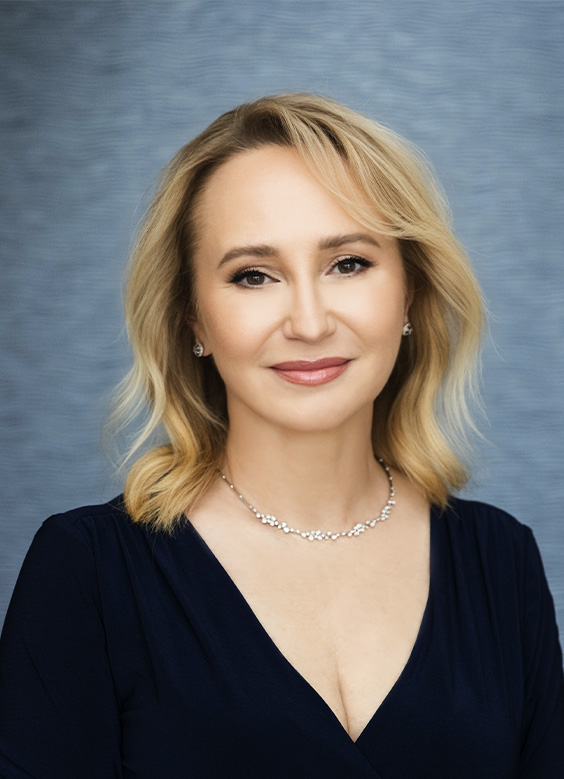
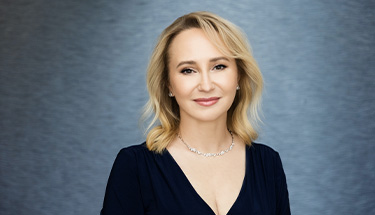
board-certified plastic surgeon
DR. LUCIE CAPEK
Dr. Lucie Capek offers advanced cosmetic plastic surgery from the unique perspective of a female plastic surgeon. Since 1996, she has been serving patients in the Capital District from Albany, Saratoga, Schenectady, and Troy, NY. She is known for using the latest technology to perform body contouring, breast surgery, and facial cosmetic surgery. She personalizes every treatment to give each patient the most natural-looking results, enhancing their beauty and increasing their self-confidence. Above all, her practice is dedicated to your health and wellness. Dr. Capek understands that your beauty and confidence is about more than just your appearance. To schedule your first consultation, contact Lucie Capek, MD.
LEARN MOREYour Procedure
Dr. Capek performs rhinoplasty using either general anesthesia or local anesthesia with intravenous sedation, so you are completely comfortable throughout the procedure. She typically performs nasal surgery in our Quad-A accredited office-based operating suite, Capek Surgical Arts, or a hospital operating room. There are two main techniques for nose reshaping, including an open and closed approach.
Open Rhinoplasty
During an open rhinoplasty, incisions are created inside your nose, connecting across the underside of the nose between the nostrils. The open rhinoplasty technique allows for full visualization of all the nasal tissues and is excellent for significant alterations in the tip shape, as well as the nasal septum and nasal dorsum (where you may have a bump). The tiny area where the external incision is made usually heals extremely well and is nearly invisible in most patients.
Closed Rhinoplasty
For a closed rhinoplasty, the incisions are made inside the nose, so they are completely invisible and hidden after surgery. This technique permits more limited contouring of nasal cartilage in the tip but has the advantage of eliminating the small visible scar at the base of the nose.
Septorhinoplasty
If you have difficulty breathing through your nose, you may have an obstructed airway, deviated septum, or other abnormality that can be addressed at the same time as your cosmetic rhinoplasty using the same incisions. A deviated septum means that the bone and cartilage (called the nasal septum) between the nasal passages have become crooked and cause breathing difficulties. A deviated septum can be a birth defect or the result of an injury like a broken nose. In either case, it can be corrected during rhinoplasty surgery.
Rhinoplasty Surgery
After numbing the area, Dr. Capek will create the incisions based on the selected technique to access the cartilage and bones that form the nose. She will then add or remove bone and cartilage, and adjust the structure based on your desired shape. The size of your nose can be reduced or increased, and the nose may be lengthened or shortened. Cartilage grafts may be utilized to remodel the nose tip, uplifting it or making it longer, thinner, or shorter. A nasal hump can also be reduced by adjusting the nasal bones and cartilage. Depending on your expected outcome, Dr. Capek will perform your rhinoplasty and create facial balance so you are left with a nose that works in harmony with your other facial features.
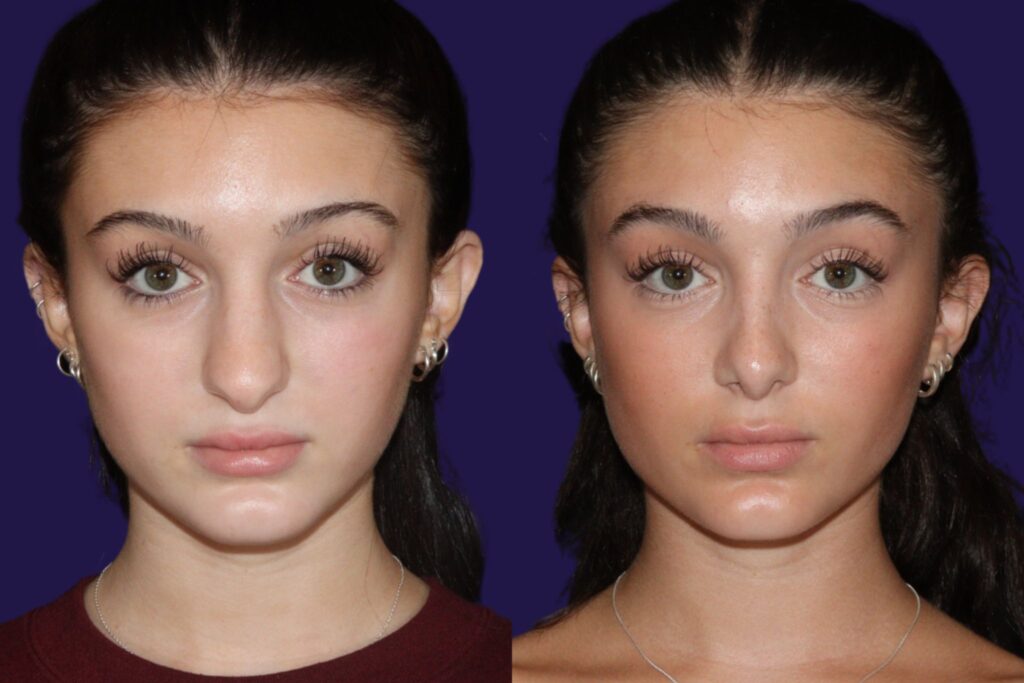
Procedures in 3d
After Your Procedure
Rhinoplasty is an outpatient procedure so you will spend a brief period in the recovery room before returning home. Our team will supply detailed instructions on what to expect from your plastic surgery healing process.
Immediately following your surgery, you can usually expect to wear a nasal splint over your new nose to support the newly structured shape. It will protect your nose from accidental bumps throughout the day or while you sleep. An internal splint or packing may also be placed, particularly if you are having functional surgery such as a septoplasty. You can also expect some swelling, bruising, and discomfort around the nose after surgery. Dr. Capek will recommend remedies to help reduce pain and swelling, such as a cold compress or pain medication. Make sure to sleep with your head elevated in order to reduce swelling.
After about a week, the metal splint and internal splints or packing (if used) will be removed. Most of your facial swelling and bruising will subside within two to three weeks. Although you can return to most regular activities within a few days, strenuous activities should be avoided for at least 2 weeks, and potential contact sports for 6-8 weeks or until cleared by Dr. Capek. This will ensure that you retain your nasal function, especially if you underwent rhinoplasty for a deviated septum.
Although you will appreciate some changes in the shape of your nose right away, the final shape takes up to a year to be fully visible. Rhinoplasty surgery is a somewhat unique plastic surgery procedure in this respect because swelling in the nasal tip in particular takes many months to completely resolve. Also, your nasal shape changes subtly as the internal healing in your tissues occurs.
It is critical to follow Dr. Capek’s aftercare instructions to ensure a proper recovery. She will inform you of any signs of complications and the normal symptoms you will experience. It is important to remember that every patient heals differently, and follow-up appointments will be necessary to oversee your recovery period. The results of your rhinoplasty are permanent, so it is important to have clear cosmetic and medical goals when planning the procedure.
What are the risks?
Significant complications from rhinoplasty are rare, especially under the care of a board-certified plastic surgeon such as Dr. Capek. However, every surgical procedure carries some risk. Potential complications of surgery include adverse reactions to anesthesia, bleeding, or infection. Other specific risks may include wound healing problems, cartilage becoming crooked as the nose heals, or difficulty breathing through your nose. A second surgery called a secondary rhinoplasty or revision rhinoplasty may be required. Chances of complications can be reduced if you follow the advice and instructions of Dr. Capek before and after your rhinoplasty procedure.
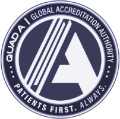
QuadA Accredited
CAPEK SURGICAL ARTS
Dr. Capek is pleased to offer her patients an intimate, comfortable and discreet surgical experience at Capek Surgical Arts (CSA), her state-of-the-art Quad A accredited operating suite right here in Latham, NY. You can undergo your procedure under the expert care of board-certified Plastic Surgeon Dr. Capek and her exceptional team of anesthesia and clinical staff without having to go to a hospital or surgery center.. Cae you can expect with Dr. Capek and her team.
LEARN MORESchedule a Consultation
If you want a better-proportioned, smaller, or larger nose that complements the rest of your facial features, rhinoplasty surgery may be right for you. Contact our office today to schedule your initial rhinoplasty consultation.
SCHEDULE A CONSULTATION
For more information, schedule your consultation appointment with Dr. Capek today!







